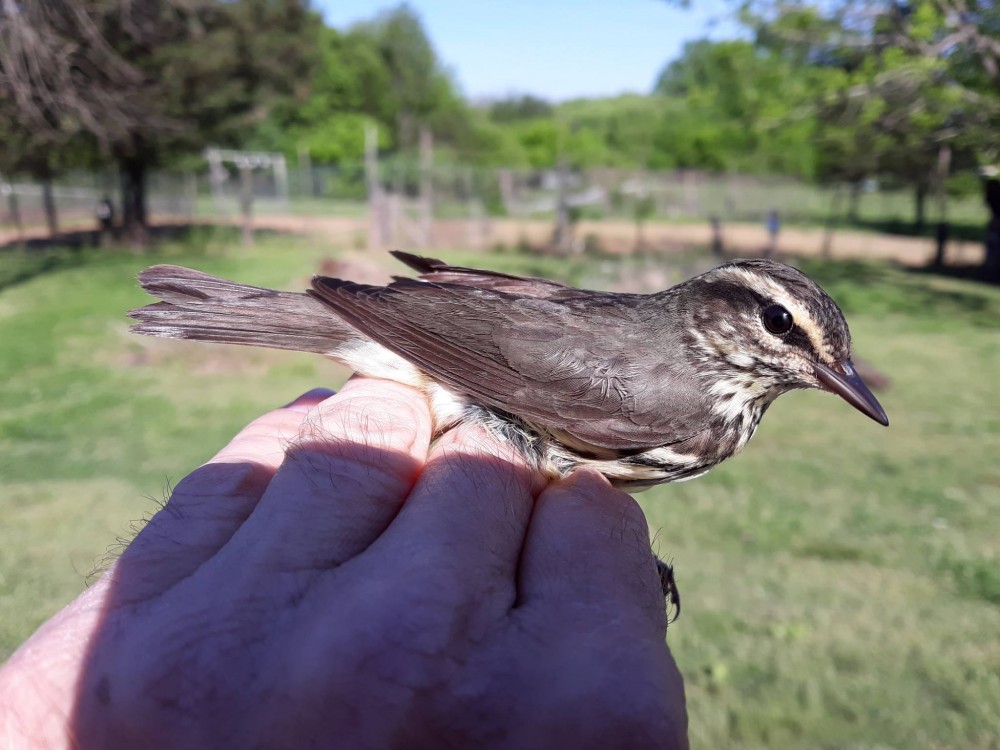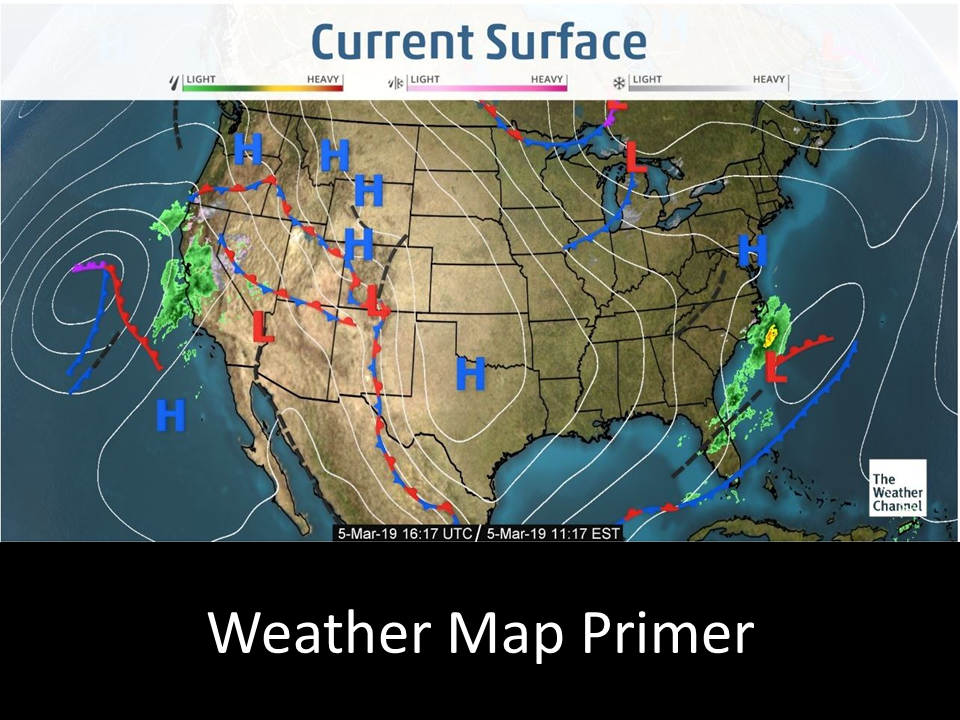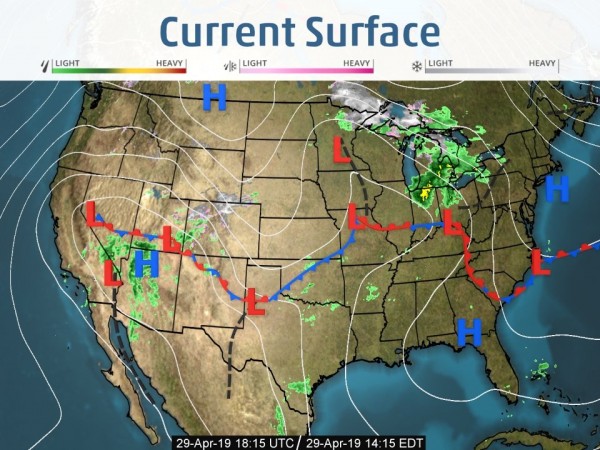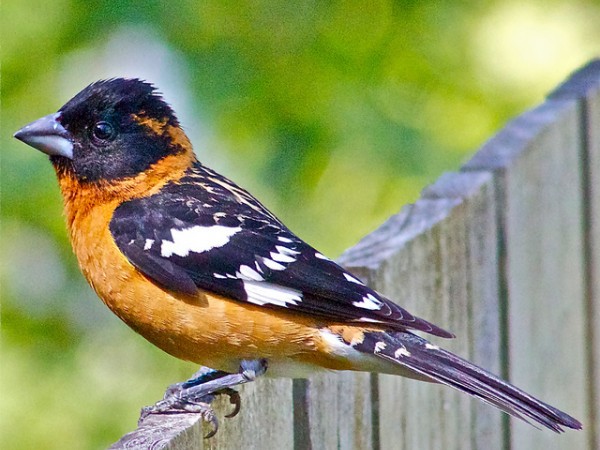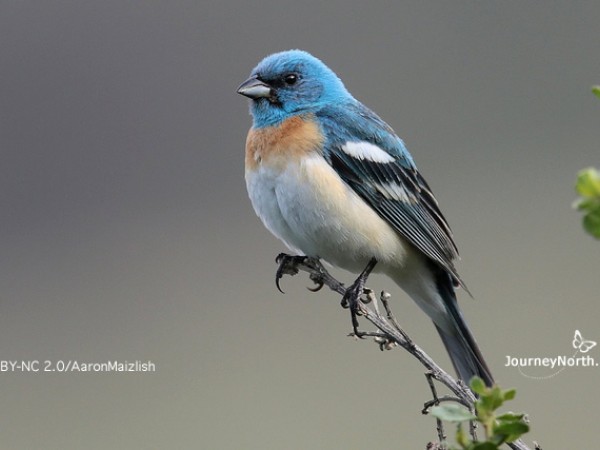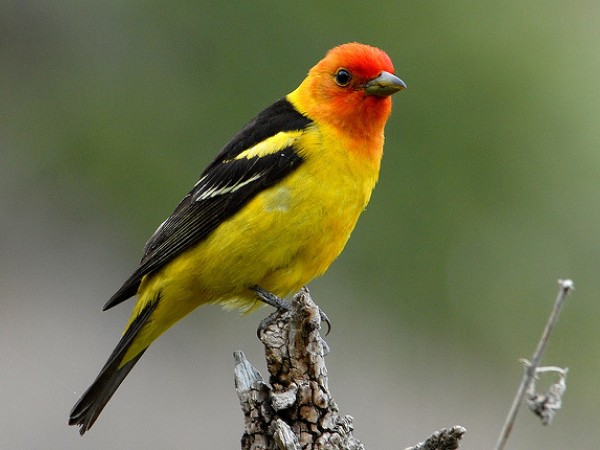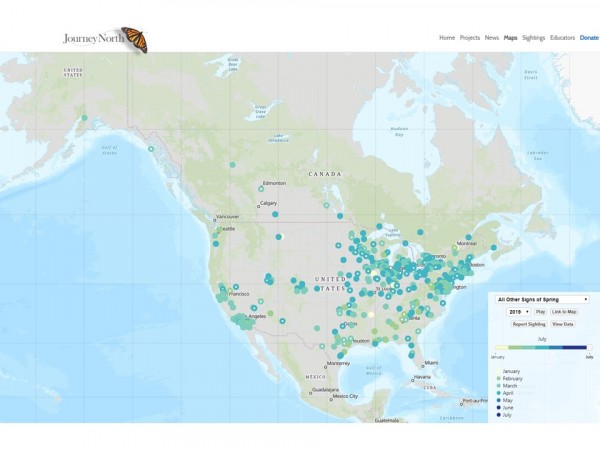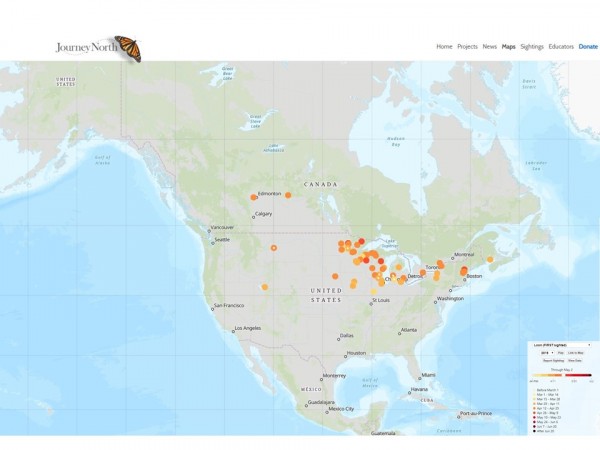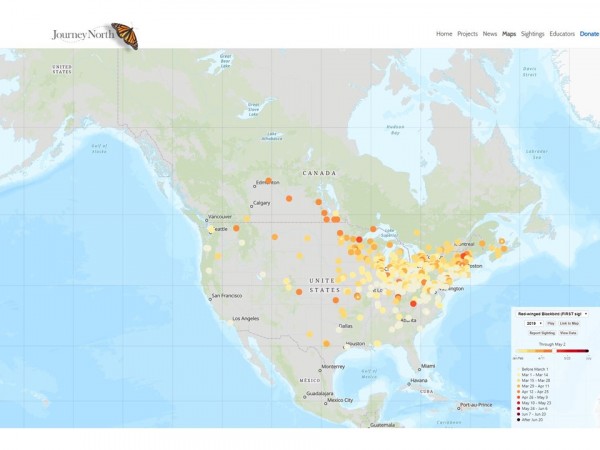More "Firsts" For Songbird Sightings
As predicted, the eastern half of the country was active, while the western half was slow.
Dear Journey North members,
As predicted, the eastern half of the country was active, while the western half was slow. In Tennessee, sunny skies and south winds led to a great birding week. At my study site near Chattanooga, I captured my first Northern Waterthrushes of the spring. I also saw and/or heard my first, Wood Thrush, Indigo Bunting, Rose-breasted Grosbeak, Blackpoll Warbler, and Yellow-billed Cuckoo.
As many as 12 warbler species have been seen all over Tennessee. Birders in New York reported 8 different warblers, as well as their first Gray Catbirds, Eastern Kingbirds, Scarlet Tanagers, and Wood Thrushes. Last week, birders in Maine reported their first migrants, and this week they added to those by seeing Northern Parulas, Black-and-white Warblers, and Chimney Swifts. Michigan increased their migrant tally, which included Cerulean Warblers, Prairie Warblers, and Yellow-breasted Chats. Probably the most impressive sightings came from Zakeski State Forest in Ohio, where 20 species of warblers were seen!
West of the Mississippi River, it was a different story. That stalled cold front meant poor flying weather all week. For example, Grand Isle, LA, is usually loaded with migrants at this time of year. Birder there described their birding experiences on Friday, Saturday, and Sunday as “slow, slower, and slowest”! In the far west, conditions were decent enough to allow for some migration, but it was not spectacular. Lazuli Buntings, Black-headed Grosbeaks, and Warbling Vireos continue to move through California, and Western Tanagers have made it to Oregon, while Wilson’s Warblers and Vaux’s Swifts arrived in Washington.
The coming week looks like more of the same. The front is still stalled, so the southeast will continue to see clear skies and south winds, which means a continued flow of migrants. Rain is moving into the Great Lakes and New England which may been less migration taking place as compared with last week. Rainy conditions will prevail in the Southwest, so there will not be much migration out west, either. These weather conditions are expected to continue into Friday and Saturday -- so not much change for some time.
Take care.
David Aborn

